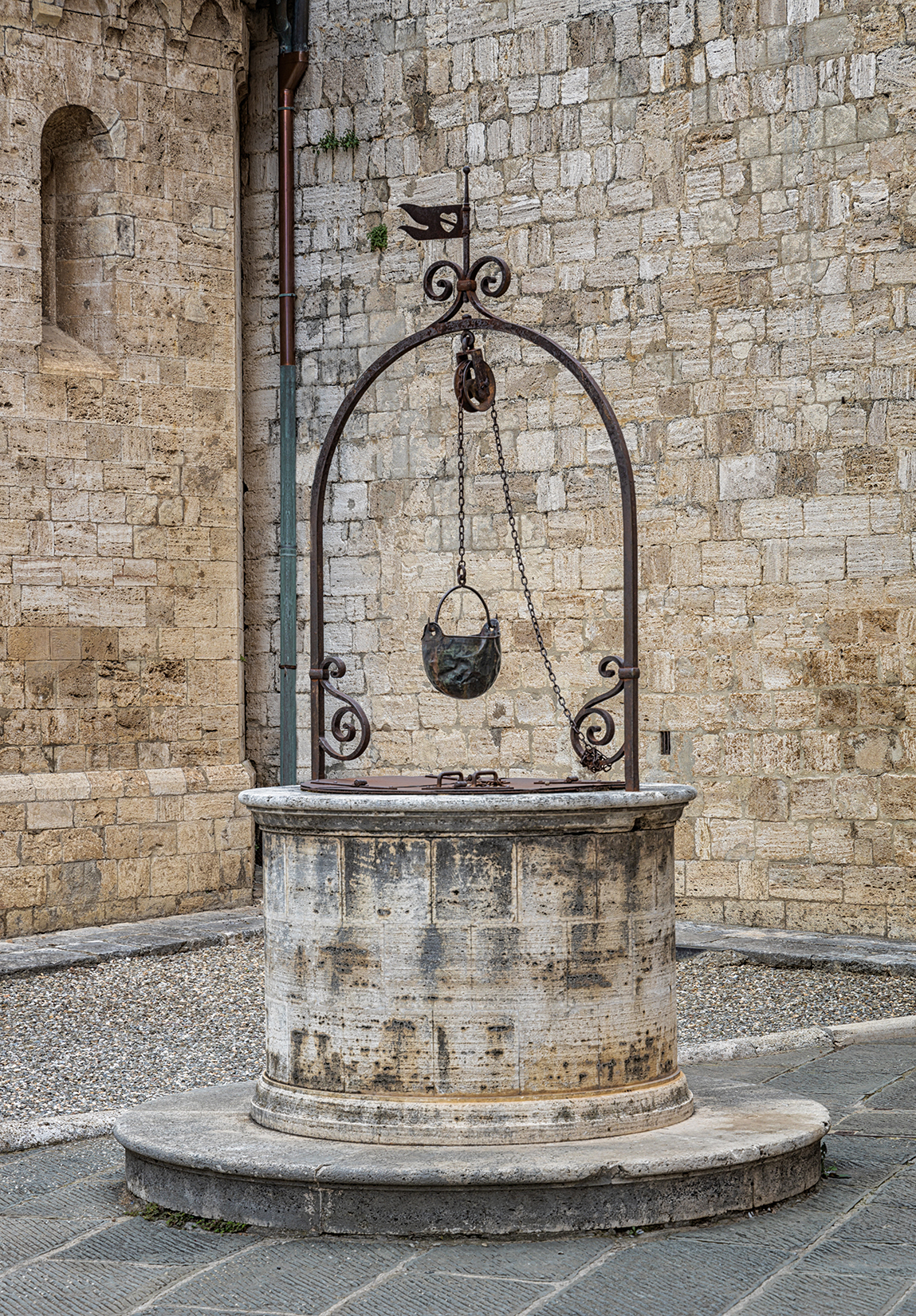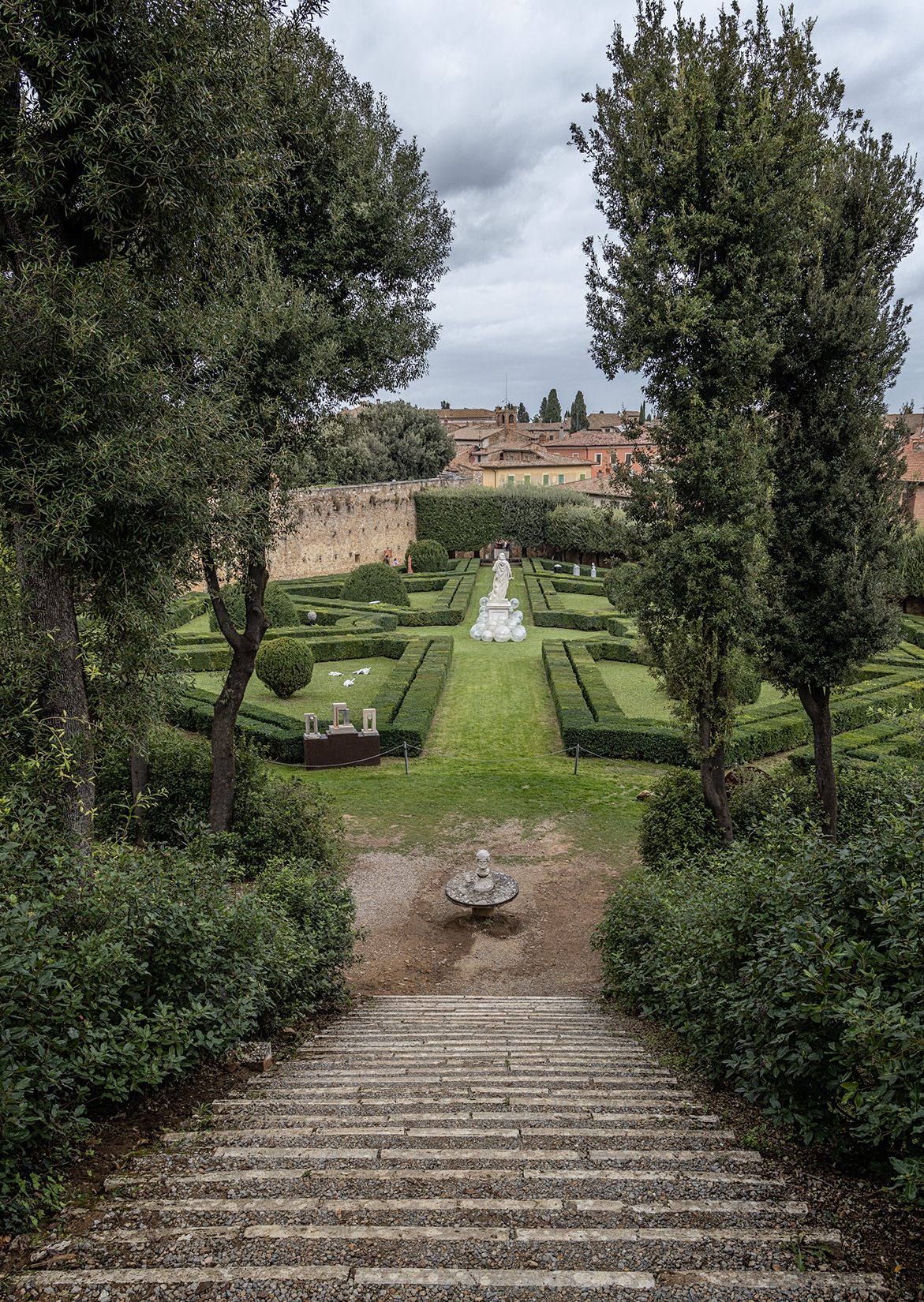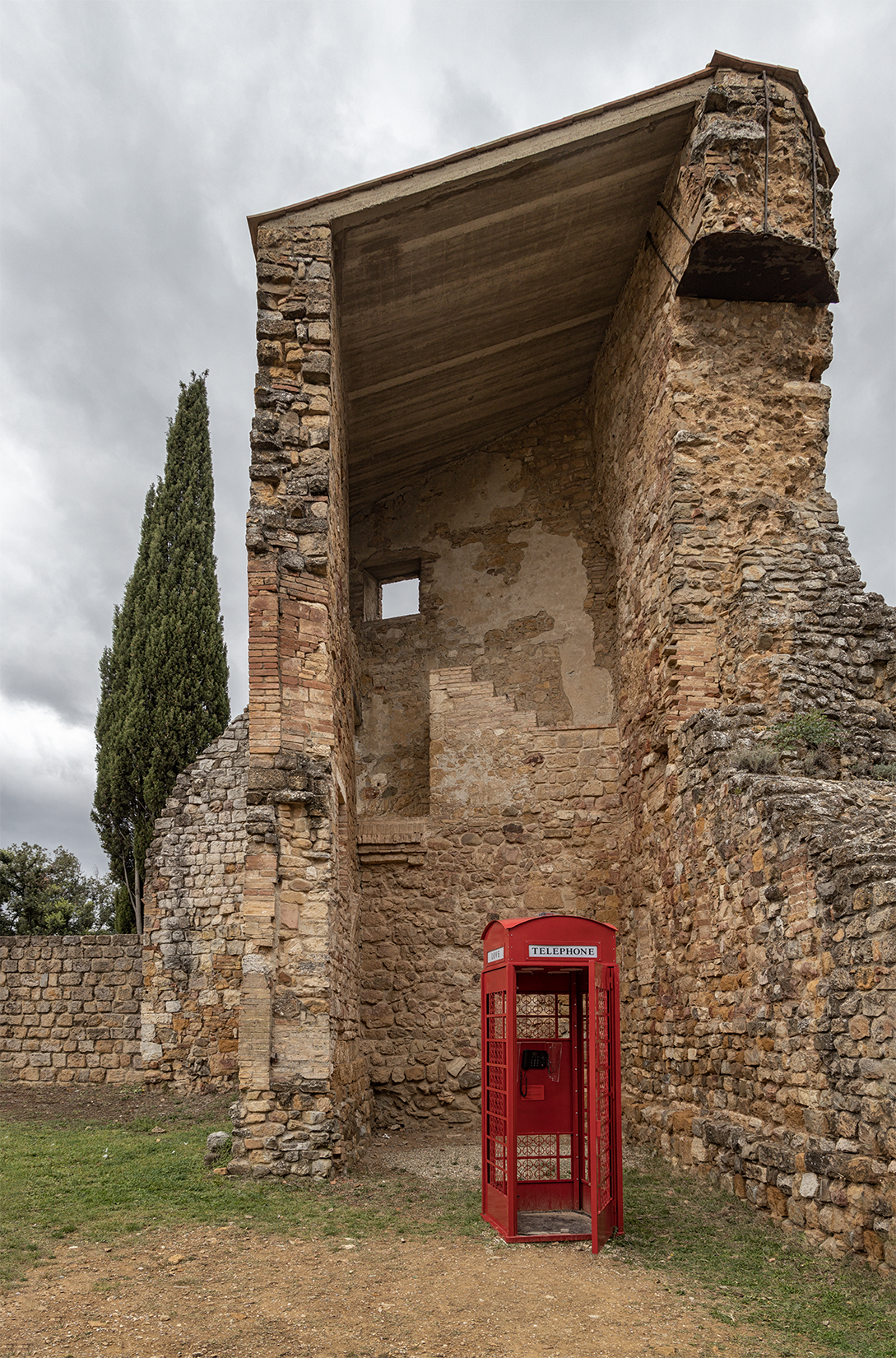San Quirico D’Orcia is one of the main towns in Val d’Orcia, and a good base from which to explore the area. The town gained importance from its position on the Via Francigena – the main pilgrim route from Northern Europe to Rome, and boasts a number of old churches. The town walls are also mostly complete and there is also the garden of Horti Leonini to eaplore.
Pieve dei Santi Quirico e Giulitta
The parish church of San Quirico and Giulitta dates from the end of the 12th Century, with the western facade being the oldest part of the building – its age being evident from the very solid construction and rounded arches, typical of the Romanesque era.
The church interior continues the simple solid Romanesque design, however the choir was rebuilt in the late 17th century and now hosts a baroque altar.
To one side in the church, hangs an altar piece by Sano di Pietro, dating from about 1470 and depicting the Madonna and Child and angels and saints (including St. Quirico).
Piazza Chigi
The church is adjacent to a small square – the Piazza Chigi. This is now home to a modern mirrored cross, which can be seen in the image below. This may seem quite incongruous in the medieval town, but it adds to the scene, and there is no reason why the towns of Tuscany should be ‘frozen’ in the Rennaisance.
Also in the Piazza Chigi, and more in keeping with the medieval feel, is the town well – the Pozzo Piazza Chigi. I especially lied the battered appearance of the bucket which itself looked several hundred years old.
The main road through the town is named after Dante Alighieri and runs from Piazza Chigi to the church of Santa Maria Assunta. It is mostly pedestrianised and there are numerous restaurants along the street.
Horti Leonini
At the other end of the town from Piazza Chigi lies the Horti Leonini, just outside the town walls. These gardens were laid out in 1580 by Diomede Leoni a native of San Quirico and friend of Michaelangelo. After an absence of 10 years travelling and working in Rome and Paris, he returned to San Quirico to find it damaged by wars, and set about restoring parts of the town, including the gardens that bear his name. The central statue is of Cosimo Medici III , dating from 1688, but today there are numerous modern sculptures also dotted around the gardens.
At the highest part of the gardens, we came across what appears to be a British telephone box, but is in fact another sculpture, described as a phone that only communicates messages of love, with each side panel including interlinked CND symbols.
Santa Maria Assunta
Close to the entrance to the Horti Leoni is the Church of Santa Maria Assunta. This is a small church dating from the second half of the 11th Century, built in the strong simple Romaesque style. One point of interest is that he main entrance is on the side of the church instead of at the end of the nave. This was probably because the side entrance was directly onto the Via Francigena, allowing pilgrims easy, direct access to the church.










